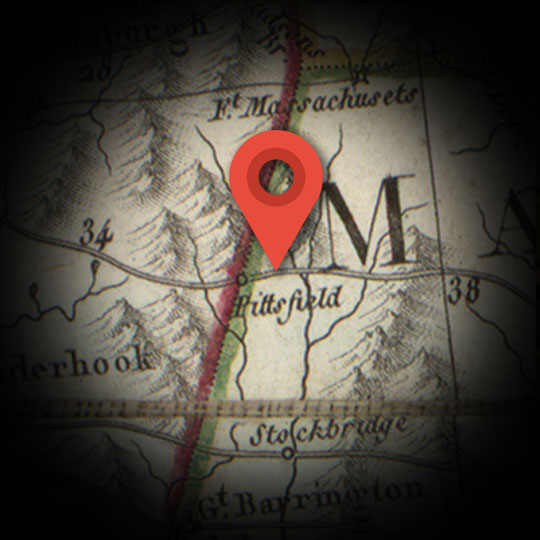PITTSFIELD
Explore
Pittsfield has, for centuries, served as the gateway to the Berkshire Mountains of Massachusetts. Alexander Hamilton traveled here in the autumn of 1802 to visit a longtime family friend and correspondant, Henzy Van Schaack.
Van Schaack is notable for having been a Loyalist—that is, one of those who supported, and/or fought for the British Crown during the Revolutionary War.
And although it would often cost him politically, Alexander Hamilton had a distinguishing openness to associating with American Loyalists.
It is estimated that about 10,000 Americans fought in uniform against the patriots vying for independence against Great Britain. Many more leant moral or monetary support.
When the conflict ultimately did not go the Loyalists’ way, some emigrated back to the mother country. Others removed to Canada or to some other colony. But a not insignificant number chose to remain in the United States. And these men and women retained considerable property and political interests.
The war’s victors, however, did not always view these interests with much sympathy. Loyalist real estate was often seized and liquidated without cause. Not infrequently, debts owed to Loyalists were summarily waived by the magistrates of the newly formed U.S. states. So Loyalists found themselves straining for justice in the courts of a country that was unfriendly to them.
In representing those who had opposed the Revolution, Alexander Hamilton was quick to see a market for his fledgling lawyer services.
There were even Loyalists with whom Hamilton cultivated friendly bonds that had nothing to do with his pocketbook. One of these was the aforementioned Henry Van Schaack.
Van Schaack was of the same Dutch heritage as Hamilton’s adopted family, the Schuylers.
Van Schaack himself was born in Kinderhook, New York, in February, 1733. He was the eldest son of a reputable merchant, church elder, and militia officer. During the French and Indian War, Van Schaack served as lieutenant to then-Captain Philip Schuyler, and he experienced fearsome combat in the area of Lake George in 1755. He later was promoted to paymaster of his regiment.
Like George Washington—who had also served in a Redcoat’s uniform during the French and Indian War—Van Schaack had sworn oaths of “allegiance, supremacy, and abjuration” to the civil and military authorities he served, i.e., the civil and military authorities constituted under British rule. He had sworn to “bear faithful and true allegiance” to King George III.
Priding himself for his conscience and his solemn faith in the Dutch Reformed Church, Van Schaack reported himself unable to take up arms against Great Britain.
Shortly after New York declared its independence, Van Schaak was arrested as a traitor, and banished from the state.
Massachusetts, however, dealt with him with much greater equanimity. Van Schaack was allowed to settle in Massachusetts’ western portion without objection. In the fall of 1784, he chose the settlement of Pittsfield as his permanent residence. Van Schaack commenced building one of the area’s largest homes.
Loyalist or no, Van Schaack proved himself an upstanding citizen in manifold ways. He served as a justice of the peace. He adopted many orphans into his and his wife’s childless household. By the end of his life he had indisputably come to be revered as one the pillars of the Pittsfield community.
During Shay’s Rebellion, Van Schaack came out against the uprising. He went so far as to quarter troops on his own property, marched there under Revolutionary War General Benjamin Lincoln, who had been tasked with quelling the uprising.
As a supporter of the new Constitutional government and a man active in developing the infrastructure and industrial potential of the Berkshire Mountains, Van Schaak corresponded with Alexander Hamilton during Hamilton’s tenure as Secretary of the Treasury. Van Schaack proudly sent to Philadelphia samples of the first machine-made carpeting produced in Western Massachusetts, reportedly by his wife.

TIME FRAME:
Oct. 31, 1802
